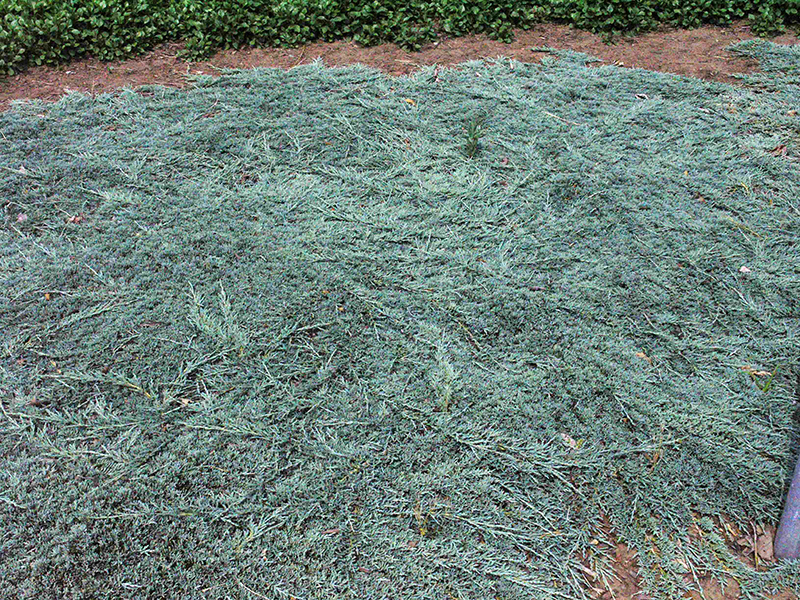
Woody > Juniperus > Juniperus horizontalis > Juniperus horizontalis 'Monber'
Juniperus horizontalis
'Monber'
Monber Creeping Juniper, Icee Blue™ Juniper
Origin: Introduced in 1996 by Monrovia Nursery, Azusa, California, the United States of America. German botanist Konrad Moench named this species of Juniper.
Mike's
Opinion


"
This Juniper has silver-blue evergreen foliage. The primary branches trail over the ground while the secondary branches are erect and plume-like. It is a multi-stemmed evergreen with a ground-hugging habit and is very easy to care for making it an ideal ground cover.
Michael Pascoe, NDP., ODH., CLT., MSc. (Plant Conservation)
"
| Family |
| Cupressaceae |
| Genus |
| Juniperus |
| Species |
| horizontalis |
| Cultivar |
| 'Monber' |
| Category |
| Woody |
| Type |
| Shrub (evergreen) |
| Synonyms |
| Juniperus horizontalis 'Icee Blue' |
| Tradmarked Name |
| Icee Blue™ |
| Pronunciation |
| USDA Hardiness Zone |
| 4 - 9 |
| Canadian Hardiness Zone |
| 3 |
| RHS Hardiness Zone |
| H3 - H7 |
| Temperature (°C) |
| -35 -(-1) |
| Temperature (°F) |
| -30 - 30 |
| Height |
| 7 - 15 cm |
| Spread |
| 30 - 90 cm |
Photographs
Description and Growing Information
Flowering Period
| General Description |
| Juniperus horizontalis 'Monber' is a very low-lying, needled evergreen with blue-green foliage. |
| Landscape |
| This Juniper cultivar is used for green roofs, seacoast exposures, topiaries, mass plantings and for erosion control on cut slopes and natural banks where there is a runoff problem. Also good for softening the top edge of masonry retaining walls. |
| Cultivation |
| Grow in full sunlight, in moderately moist, well drained soil. Very pH and salt tolerant, performs well in windy locations with dry, hot conditions. Prefers a dry, sandy soil. During the first growing season, regular watering is recommended to establish a deep, extensive rooting system. Use a general purpose fertilizer before new spring growth. |
| Growth |
| Medium |
| ID Characteristic |
| Needles are silvery blue-green turning purple in winter, branches are loose and floppy. |
| Pests |
| Possible problems include bagworms, webworms, scale insects, spider mites, leaf miners and aphids. |
| Habitat |
| Horticultural origin. |
| Bark/Stem Description |
| Brown, peeling easily and hidden by overlapping branches. |
| Flower/Leaf Bud Description |
| Buds are small and inconspicuous. |
| Leaf Description |
| Needles have a pleasant fragrance, are blue in the summer and purple to maroon in winter. They are toxic and once used as a lice repellant in rural areas. The extracted oils are now used in many traditional insecticides. New needles are prickly and become flat as they mature, arranged like scales on the stems. |
| Flower Description |
| Non-flowering. |
| Colour Description |
| Needles are silver-blue in summer and purple to maroon in winter. |
| Texture Description |
| The foliage has a fine texture. |
| Notable Specimens |
| The Gardens of Fanshawe College, London, Ontario, Canada. Missouri Botanical Garden, St. Louis, Missouri, the United States of America. |
| Propagation |
| Via semi-hardwood cuttings or using simple layering techniques. |

